News of Note Or Not, We Report You Decide
Skip to commentsSteven Heller, Harvey Kurtzman, and Alfred E. Neuman; Comics Conventions and Artists Alleys; a 1950s mania; Carol Lay’s new science fiction graphic novel; the comics page of The Bradford Era; the Derf Backderf interview.
Origins of Kurtzman’s New York Times Origins of Alfred E. Neuman
Indirectly, Kurtzman helped change my life, and so did his creation, Alfred E. Neuman. Despite my gross artistic inadequacy, somehow Kurtzman and I became professional friends when, four years later, I was hired as the art director of The New York Times Op-Ed page, where my mandate was to bring in surprising visual contributions.
I had always wanted to know the real origins of Alfred E. Neuman, MAD’s resident trickster and mascot. So, I proposed that Kurtzman write a guest OpEd on just that. He jumped at the chance,,,
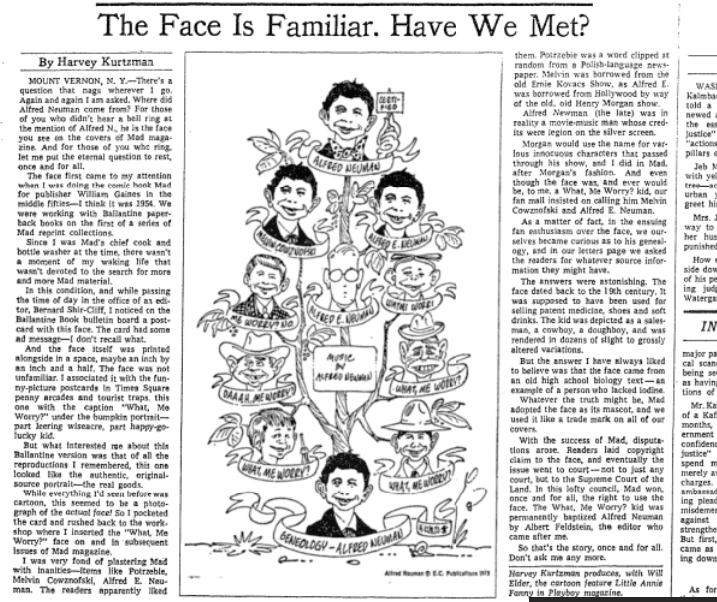
Steven Heller writes of how he got Harvey Kurtzman to write an article for The New York Times, and then includes a link to the complete 1975 explanation of how Alfred E. Neuman came to be.
**********
The High Cost of Drawing Sketches at the New York Comic Con
It’s rare to find out just how much more artists are paying for their NYCC Artist Alley tables. ReedPop, the owner of NYCC, publishes the Artist Alley price right on the application on the NYCC site. But few people outside of artists applying for a table head to that part of the NYCC site. So when artist TC Ford announced on his Facebook that “Artist Alley NYCC is $565…IF they accept you…”, the community woke up to just how much artists are paying to present the products of their labor there.
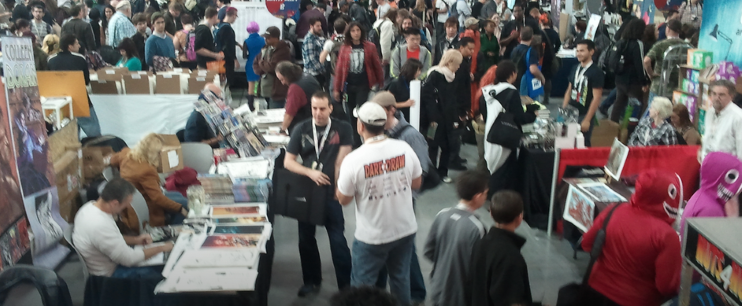
The Artist Alley table is just one of many costs involved at tabling at NYCC. Out of town artists have to contend with paying for hotels, travel and food.
**********
The Comic Book Bonfires of Post-WWII America
The 160 boys and girls in Corpus Christi Memorial Stadium eagerly waited for someone to start the fire. It was February 27, 1948, and the children were gathered around a stack of comic books—superhero adventures, crime tales, and lurid horror titles. The pile had been assembled thanks to a clever ploy by organizers: Bring three comics and gain free admission to a movie at the nearby theater.
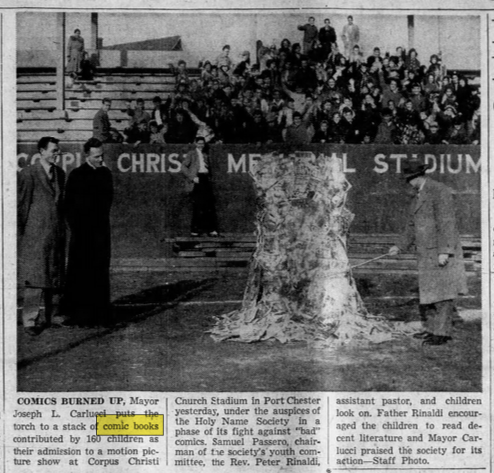
Because such stunts were publicized, they resulted in copycat efforts. Burnings were arranged in Buffalo; Memphis; Waterbury, Connecticut; Vallejo, California; Louisville, Kentucky; and elsewhere. In Rumson, New Jersey, Cub Scouts rounded up comics while perched on a fire truck. In Port Huron, Michigan, St. Stephen Catholic School students sang “The Star-Spangled Banner” after the cheap paper was lit. In Freeport, Illinois, one Boy Scout troop had a fire attended by the local assistant fire chief, who lectured on fire safety as copies of Little Lulu went up in flames.
**********
My Time Machine, a graphic novel by Carol Lay
Cartoonist Carol Lay, known to most of us for her Lay Lines comic strip, has a graphic novel in the offing.
My Time Machine takes off when Carol Lay’s silver-haired protagonist (who happens to resemble the author) embarks on a foolhardy odyssey that transports her from the politically addled and environmentally anxious America of 2020 to a bleak and distant future.
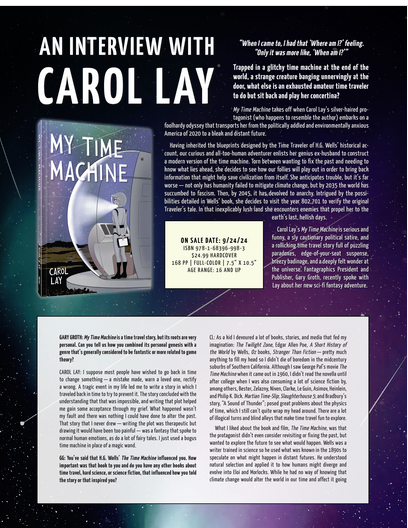
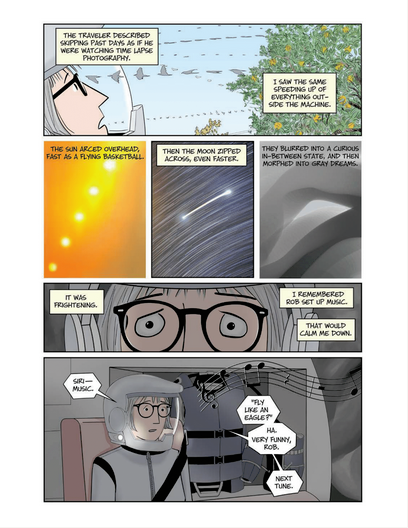
Fantagraphics provides a short interview with the author and a 20 pages preview of the book.
**********
Musings about The Bradford Era comics page
COMICS: Have you ever thought about what you’re looking at on The Era’s comic page?
We were curious about “who” was the oldest on the page, and we would have guessed Charlie Brown and friends in Peanuts, created by Charles M. Schultz.
We’d be wrong.
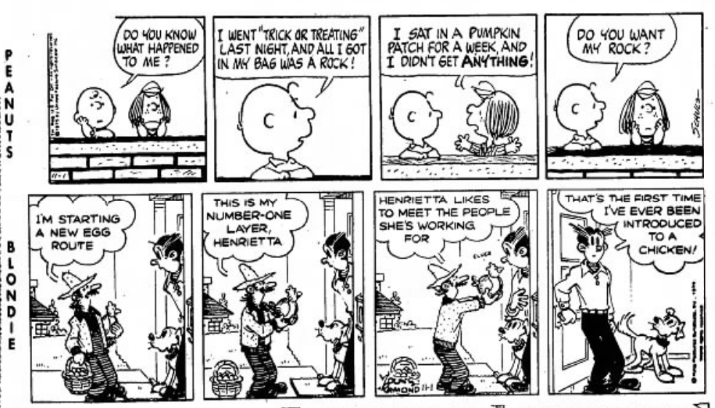
The Bradford Era discusses the age of the comics it runs. At least they do print newer creations:
The other strips on the comic page are more modern, Tundra since 1991 and Lola since 1999.
**********
A Career (so far) Spanning Interview with Derf Backderf
Graphic historian Derf Backderf (My Friend Dahmer; Kent State) discusses his career including his alternative comic strip The City:
How did you stumble into The City then?
After I stopped political cartooning, I was trying to figure out what to do next. That’s when the alt-weeklies were really starting to rise up. I was in Cleveland by that point, I was working for the Cleveland Plain Dealer, as an artist/designer and staff cartoonist while I tried to figure out what to do next. I started reading the local weekly paper and I was blown away by comics like Life in Hell, Lynda Barry, a few others, and I thought, man, I could do something like this. So I developed this freeform comic strip, which were the observations of a 20-something hipster walking around a big city. And I sold it. It worked. I made a living with that thing for 20 years. Kind of crazy.

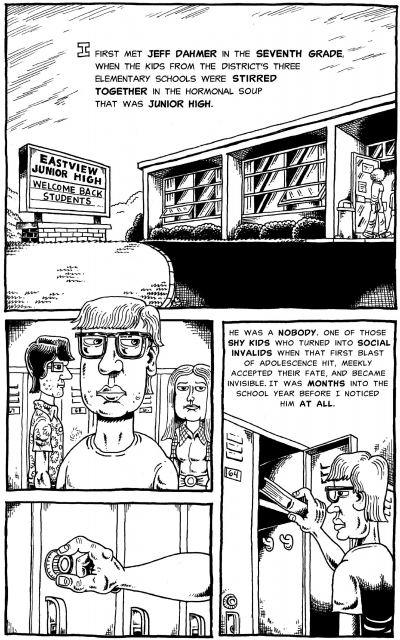
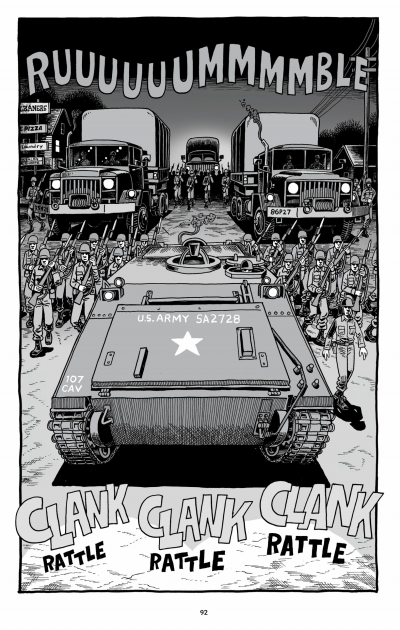
At its height you were in 140 papers.
Yeah. I made money with it up till the end, when I finally pulled the plug. Weeklies were swirling the drain at that point…
But you know, that alt-weekly newspaper business, oh, my god. They quickly blew it, and it got pretty frustrating by the late ‘90s…
The Comics Journal presents Jason Bergman’s interview with Derf Backderf.
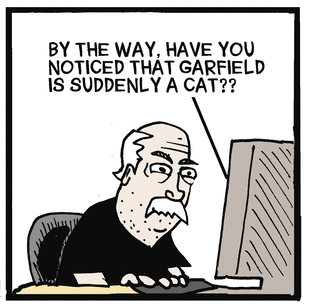

Comments
Comments are closed.